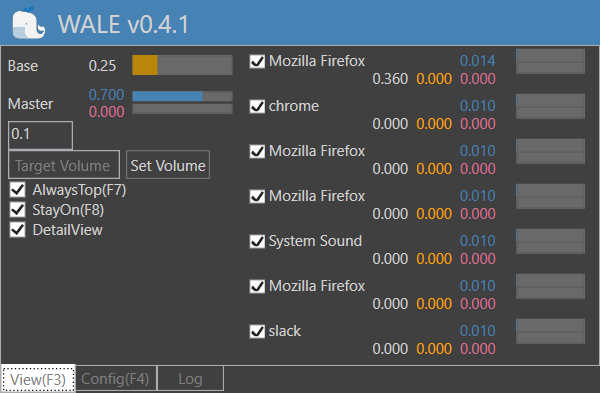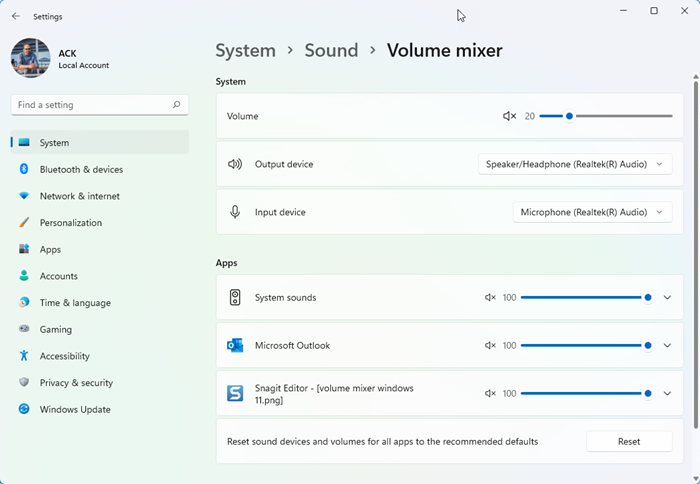Did you like playing audio (music and videos) on your Windows computer? Then you must have faced a loudness issue sometimes. It is not just limited to Windows, but it happens on all devices and operating systems. Loudness issues can be roughly translated to having different loudness levels for different apps. This gets really annoying sometimes and leaves you with manually adjusting the volume every time you switch apps. But the tool we are talking about in this post can help you exactly with that. WALE controls each app’s volume separately and tries to bring them to the same loudness level.
WALE – Windows Audio Loudness Equalizer

WALE stands for Windows Audio Loudness Equalizer and the tool is good at doing that too. It is a simple standalone utility that sits in the system tray and does its job. The program does use some advanced terms related to audio, but that does not make this an advanced tool at all. But you must be wondering, how does it level the audio?
I would directly like to quote the developer:
It calculates appropriate volume from average peak level and lowers the volume immediately when the peak is exceeding desired level. You can configure several parameters such as action timing, period of average, volume recovery function, target peak level, and so on.
There are some serious calculations going in the background as a result of which, you get a consistent loudness level on your Windows computer.
WALE is quite simple to use as well. As I mentioned, it is available in a portable format and can be accessed from the system tray. The UI is minimalistic and gets the job done quickly. The program displays a list of applications that are running and have an audio output. You can use the checkbox corresponding to each one of them to control whether they are controlled by Wale.
Apart from that, you can read all the audio level values your computer is operating on. You can see what the original audio level is and on what audio level is the application operating on. You can also disable DetailView to get more concise and to-the-point information.
Moving on to the Config tab, you can control a few audio-related settings. The terms used here are a little advanced and it is recommended not to change them if you are not sure. But even if you change them, the default values are also displayed right there.
The program can automatically run at Windows startup and you can also adjust the window priority in settings. The log tab displays all logs generated and you can essentially view the levels that were set for different applications on your computer.
WALE is a great audio equalizer software for your computer. You must have experienced this feature already on your TV where all the channels have varying loudness. But WALE equalizes loudness on your computer. Now you can play audio from any application without having to manually adjust the volume every time. Click here to download WALE.
Read: Spatial Sound keeps switching to Windows Sonic.
How do I control Windows Volume Mixer?

First, open Volume Mixer on your Windows 11/10 computer. Open Windows Search and type Volume Mixer or go to “Settings > System > Sound > Volume Mixer.” Here, you can control the volume of different apps on your system. For example, if you want to control the volume of Firefox, move its volume slider. You can also select the default input and output device for a particular app via Volume Mixer.
Does loudness equalization increase volume?
Loudness Equalization is the technique of adjusting volume by controlling the different frequency bands in an audio signal. Loudness Equalization does not increase volume. Instead, it aims to make the volume level constant across different sources of audio signals. For example, a user has to control the volume every time a commercial break occurs during a TV program. Today’s expensive HD-capable TVs can equalize volume so that the sound stays at a somewhat constant level.
That’s it.
Read next: How to adjust Bass and Treble in Windows 11.